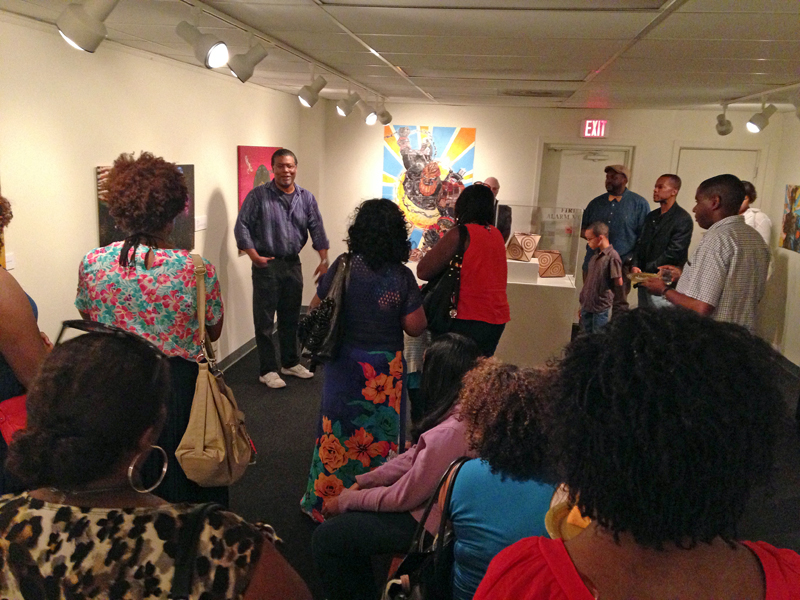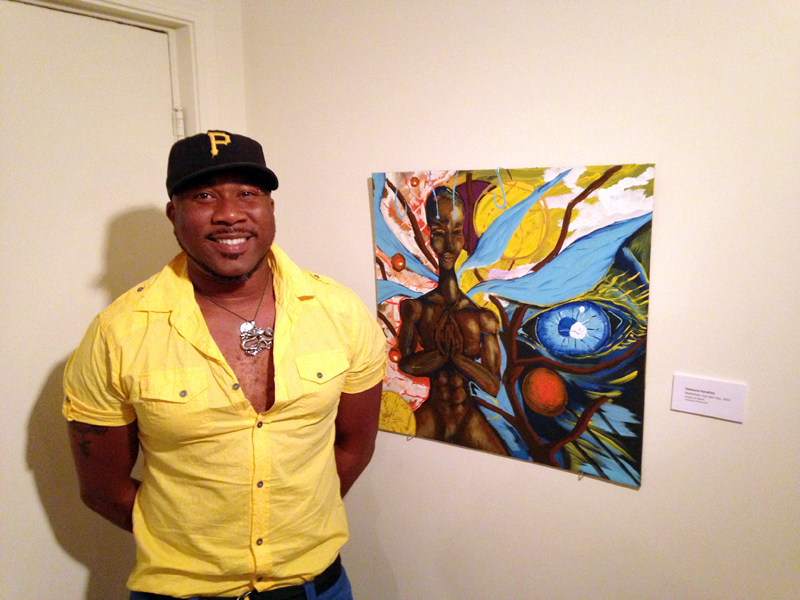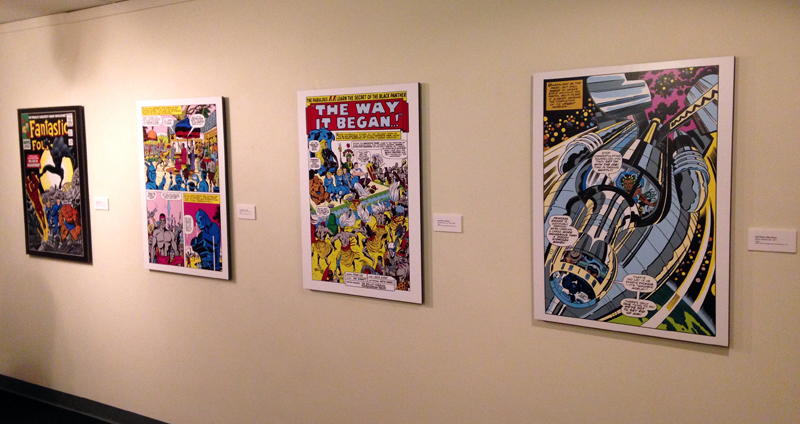
Riffing on Afrofuturism: origin stories for African American superheroes
“Riffing on the Real II: Back to Afrofuturism,” currently on display at the Tubman African American Museum, is an exploration into the Afrofuturism aesthetic. The exhibit seeks to demonstrate the narrative of ancient African, Carribbean and African American masquerade traditions as precursors to contemporary portrayals of African American superhero characters.
According to the exhibit’s curator, Jeffrey Bruce, Afrofuturism is a popular term now, but one that represents a movement beginning in the 1950s. He cites the work of Sun Ra, a prolific jazz composer and “cosmic philosopher” as one of the earliest examples of Afrofuturism.
“When people talk about Afrofuturism now, they usually start with a discussion of Sun Ra and his jazz mythology that he put together in his stage shows,” explained Bruce. “They were about music. They were also about mythology, science fiction and his own world view.”
Macon artist DeWayne Kendrick stands with one of his two works in the show.
Though “R.O.T.R II” devotes wall space to pieces influenced by music, the dominant thread focuses on the emergence of science fiction imagery and mythology from long-held African and African American traditions.
“When I talk about [Afrofuturism], what I’m talking about is this connecting point between traditional African and traditional African American culture and ideas that you normally think about when you think about things like science fiction or fantasy, other kinds of fantastic fiction. How these two things come together,” explained Bruce.
Walking into the first room of the exhibit, one is immediately impacted by four powerful images— four reproduced panels from the 1960s comic book that introduced the character of Black Panther. According to Bruce, this character embodies the themes of the exhibit because he exists with “one foot in the world of superheroes and comic book science fiction, and one foot in the traditional African masquerade.”
Images of “Fantastic Four” Volume 1, Number 52, which features the introduction of the Black Panther character. By Jack Kirby and Joe Sinnott for Marvel Entertainment
“The easiest example I can use to describe it is the Black Panther images that are in the front. Which is The Fantastic Four from the 1960s, when that character made his debut. But that character kind of represents in a nutshell what I am talking about when I talk about Afrofuturism, which is traditional African culture mixed with this kind of futuristic science fiction,” Bruce said.
As one moves through the four rooms comprising the exhibit, varied styles and media are featured. Work by self-taught artists and visionary artists sit near intricate science fiction paintings. Fine art stands beside commercial art. Some of the works are inspired by music and musical traditions, but most are focused primarily on the world of science fiction and fantasy. According to Bruce, this is par for the course in Afrofuturism.
“From things like funk music, ’70s and ’80s funk music, to jazz, to ’60s rock, there is this back-and-forth between visual artists and musicians,” he said.
In the final room of the exhibit, Bruce brings the discussion back to his thesis that the African American superhero is an evolution of the masquerade tradition. Four digital reproductions of work by John Jennings, originally shown in Atlanta as part of an exhibit called “Black Kirby,” are on display. Jack Kirby is the creator of the Black Panther character mentioned earlier, and these works are recent responses to Kirby’s work.
“The original work by that artist (John Jennings)… I saw his work in Atlanta in a show called ‘Black Kirby’… It’s about him (Kirby) and his art and his ideas, and mixing those with very contemporary African American ideas,” Bruce said.
Attendees examine works by John Jennings, originally exhibited in the “Black Kirby” exhibit.
Every comic book superhero has an origin story. “R.O.T.R. II” explores the idea that all African American comic book superheroes might share a common origin in the African masquerade tradition. What are your thoughts?
Recent Content
-
Artsarticle ·
-
Artsarticle ·
-
Artsarticle ·




